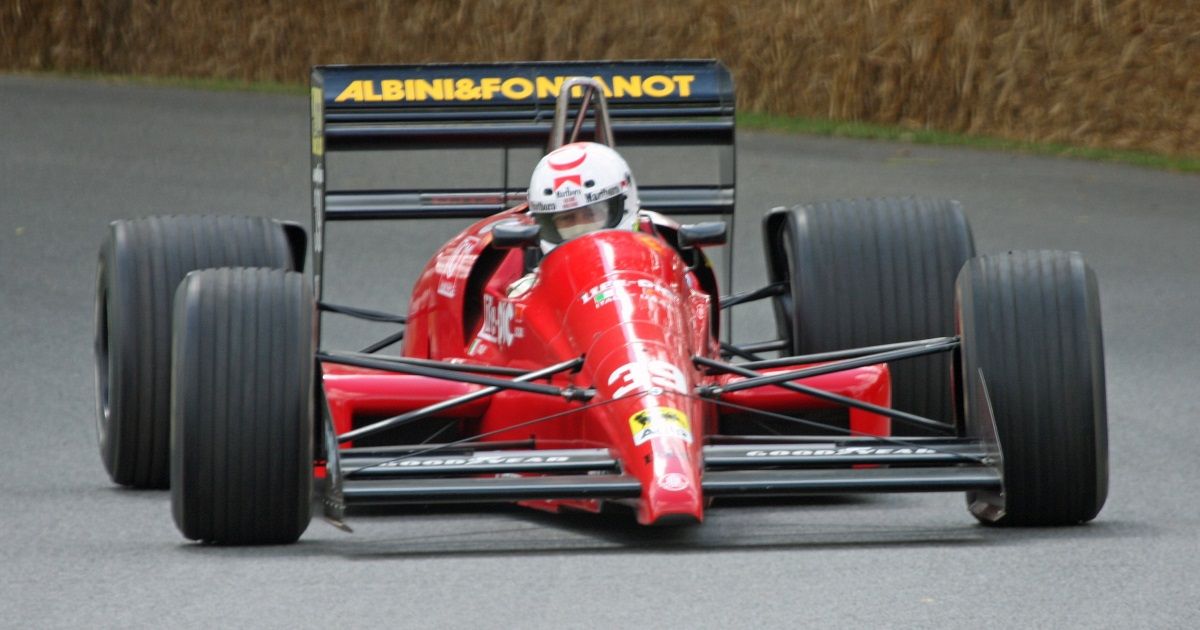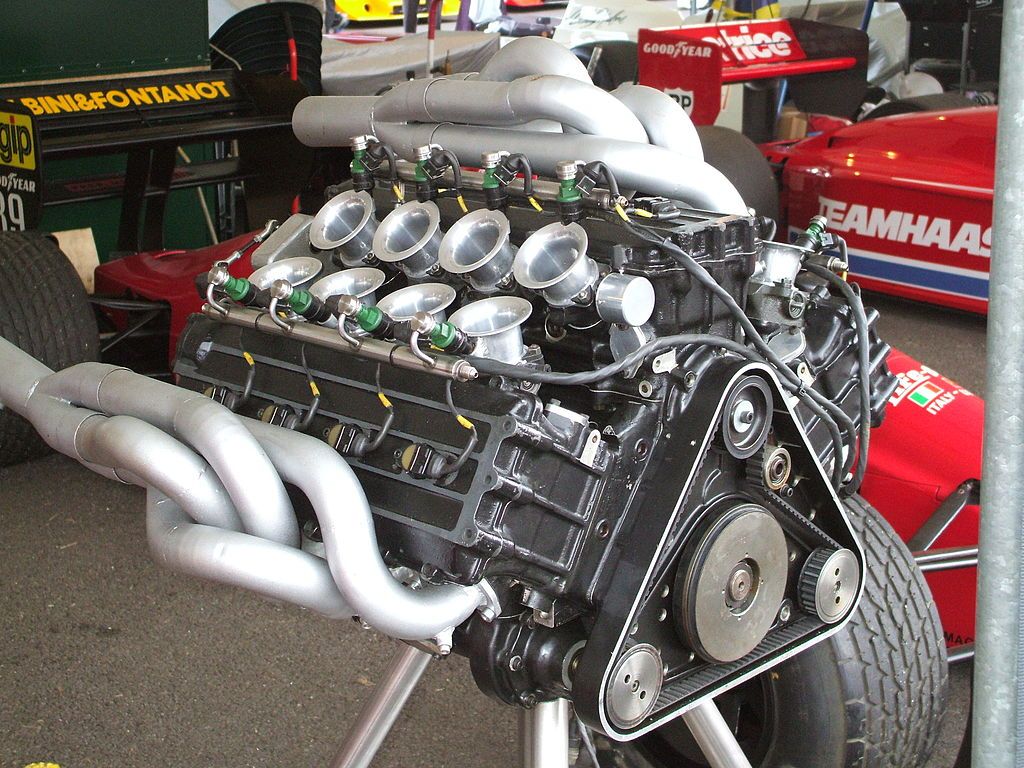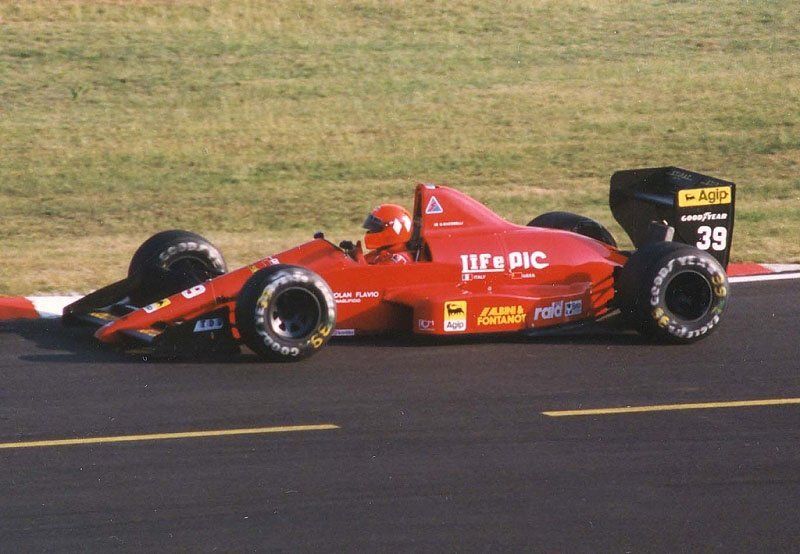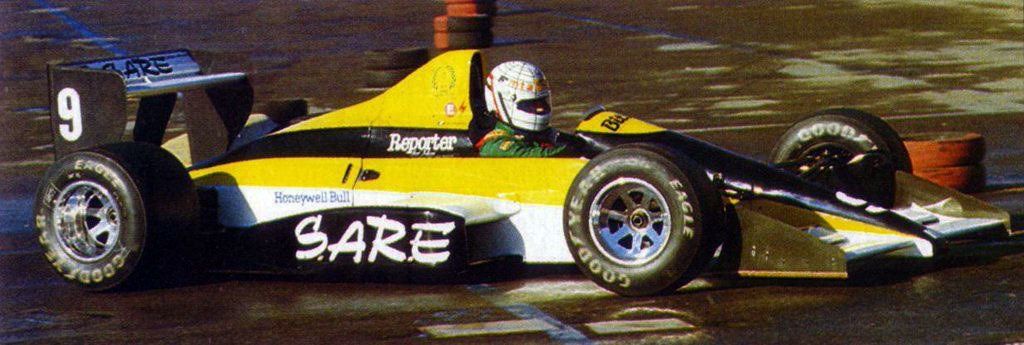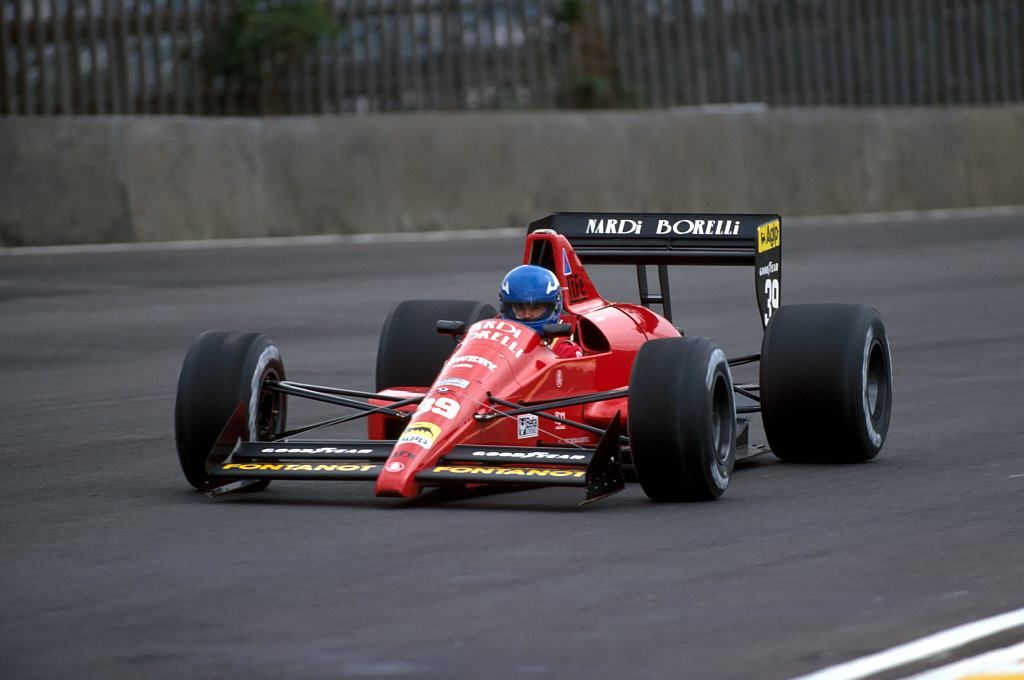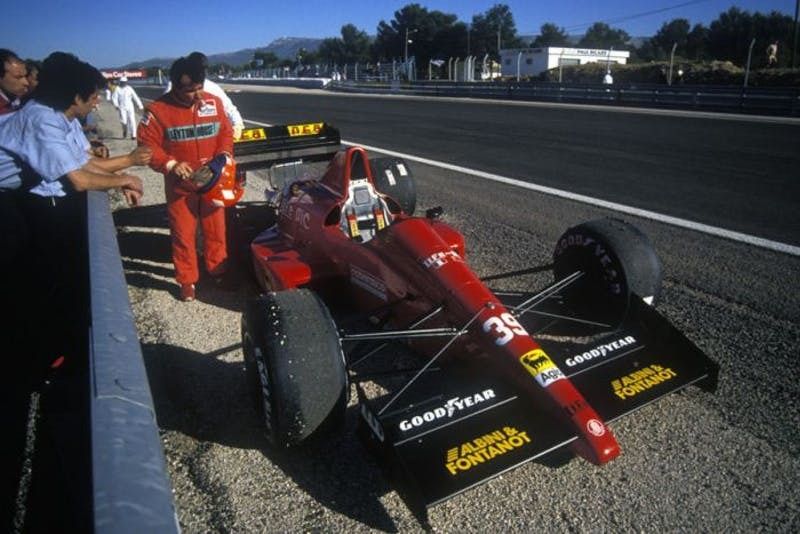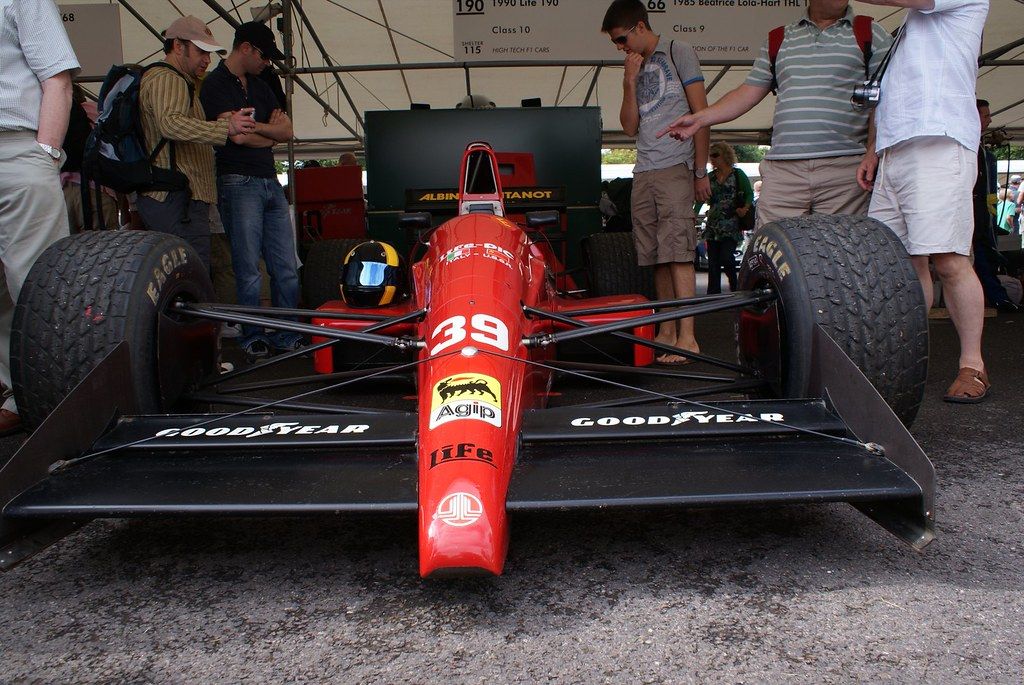It's a red Formula One car, it packs a never-seen-before W12 engine, it's Italian, and it's even from the city of Modena. What can possibly go wrong?
Except everything did go wrong. It was not a Ferrari. It was a Life Racing Engines L190, and it was one of the slowest contenders in Formula One.
Let's take a closer look at Life Racing Engines.
Life Began With The W12 Motor
The life of Life Racing Engines started first with its W12 engine. Not only did the team shared a similar paint scheme and the same birthplace with Ferrari, but Life's creator was also at some point related to the prancing horse. Franco Rocchi, an ex-Ferrari engineer, was responsible for the engine design of the 308 GTB road car in the 1970s. He was also proposing a W12 power unit with 480 hp before his dismissal in 1980.
Rocchi continued to work on his engines privately with F1 ambition. According to his plan, the W configuration, with cylinders packed in 3 banks, would lead to a compact footprint that is short like a V8 but at the same time providing the same power as a V12. On paper, despite the increase in height, the W12 would allow a relative centered gravity, plus the reduced engine compartment could make way for better aero parts, which would benefit the handling of an F1 car.
The Birth Of Life Racing Engine
In 1989, F1's governing body, Federation Internationale de l'Automobile (FIA), banned turbocharging from the sport, as the monstrously powerful engines were too technically and financially demanding for the teams. With relatively sustainable engine bills, the end of "The Turbo Era" saw the emergence of many new engine manufacturers with different configurations.
Ferrari and Lamborghini used the traditionally Italian V12, Renault and Honda continued their success with Williams and McLaren using V10s, small-scale newcomers like Yamaha, Judd, and Ilmor also flocked in. The F1 grid was packed with engine notes of all sorts.
Rocchi's pitch of his radical design was well received by one fellow compatriot, businessman Ernesto Vita. For reasons unknown, Vita decided motorsport was a good way to make quick money. To capitalize on the opportunity of the 1989 change of engine regulations, Vita purchased the rights to the W12 motor from Rocchi and hoped to supply it to a front-running F1 team.
The trouble was, how would the big teams be willing to buy an unproven, unusual power unit built by an unheard small Italian company when they had powerhouses like Ferrari, Honda, or Ford for their choices? Vita failed to search for a client for his W12. At this stage, it would be reasonable to guess that was the end of Vita's F1 dream. But this is wrong, as it was just the beginning: With his search for a partner failed, Vita decided to run his own F1 team in the 1990 season.
The Life Team was named after the English translation of Vita's family name. For the chassis, Life purchased one from First Racing, a team that proposed to race in the 1989 season but failed to do so. The First Racing chassis itself was a very much flawed design, and it even failed to pass FIA's crash test. The Life Team, however, did manage to sort out the safety issues and fit their W12 engine inside, creating their only car, the L190, for the 1990 season.
1990: Life's Only Season
The Life Team arrived 1990's season opener in Phoenix, Arizona, with only one car driven by Gary Brabham, son of former World Champion Jack Brabham.
Today's F1 race is comprised of 20 cars, two cars from each of the ten teams. In 1990 though there were 35 cars from 19 teams. Due to safety concerns, the races on Sunday could only accommodate 26 cars. Those ranked beyond 26th in Saturday's Qualifying Session could not race on Sunday. But a 35-car grid would still be too crowded for Qualifying. Therefore, a Pre-Qualifying Session was added on Friday.
The Friday sessions were mandatory for new teams and the two teams with the worst results last season. Being a newcomer, Life had to join this session in order to fight for a place on Saturday's 30-car lineup.
The Pre-Qualifying Session quickly commenced with nine cars fighting for four seats. Drivers were doing their flying laps. Life's target was to beat the 1:33.331 of the 4th-placed Lola driven by Aguri Suzuki. The W12-powered L190 race car turned out finishing with a lap time of a staggering 2:07.147. A 34-second gap with the time required for advancing to Saturday's Qualifying Session.
It was until that moment, everyone at the Life Team finally realized their creation was embarrassingly incompetent in every aspect. An average F1 racer in 1990 could produce around 700bhp. The W12 of Life L190, meanwhile, could only produce at most 400bhp. Plus, with such tuning, the W12 would need to be rebuilt every two laps. This meant the realistic power output was limited to only about 370bhp.
Besides being seriously underpowered, the Life L190 also suffered from disastrous reliability. In the 2nd race of the season, the Brazilian Grand Prix, the L190 broke down early, covering only 400 meters from the pit. With such horrific infrastructure, driver Gary Brabham left the team for good after only two races in the Life car.
Italian driver Bruno Giacomelli then replaced the Australian. At the 3rd round in San Marino, the L190 ranked last and were knocked out again in Pre-Qualifying, with a lap time of 7:16.212. Wounder, how were the front runners doing? The pole-sitter, Ayrton Senna's lap, was 1:23.220. Safe to say, this is one of the slowest lap ever in F1 history, when the Life's average speed was only 35km/h. Even a Toyota Corolla could have done better than it!
The Life L190 may lack performance, but team boss Vita surely didn't lack perseverance. Despite the L190 constantly failing to reach Qualifying, the team still participated in 14 races out of 16 of the season. At some point, they even ditched the W12 engine and switched to a rather mediocre Judd V8.
But none of the efforts could save the Life Team. Vita finally canceled the project, and Life withdrew from the sport after the 14th-round Spanish Grand Prix. Marking an end of a wild F1 dream which sadly was never actualized with much rationality.
The one and only L190 chassis and its original W12 have been restored and were shown in public in a few motoring events. Here you can see it lining up along with some classic F1 racers at the Goodwood Festival of Speed in 2009.

